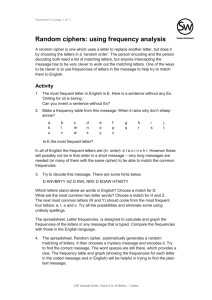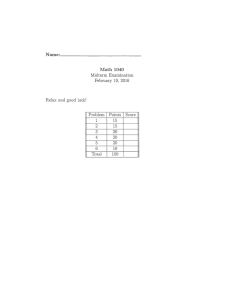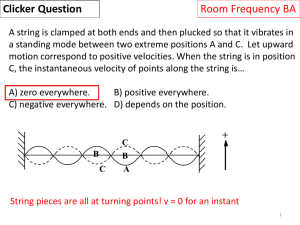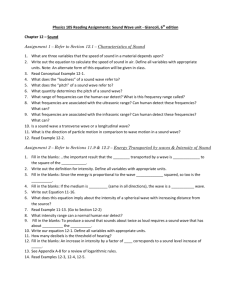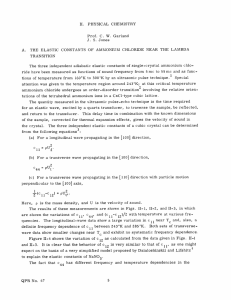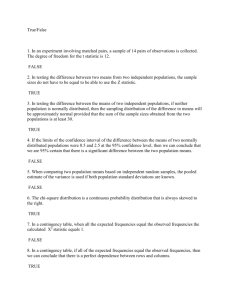standing waves and resonance physics 205 lab 2
advertisement
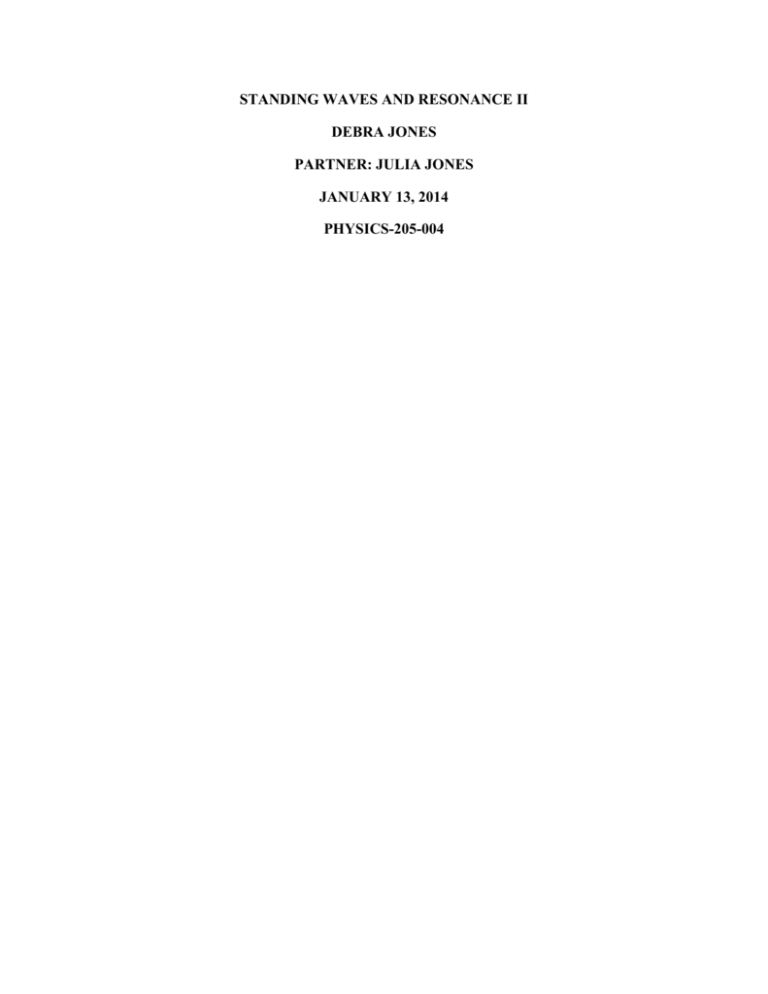
STANDING WAVES AND RESONANCE II DEBRA JONES PARTNER: JULIA JONES JANUARY 13, 2014 PHYSICS-205-004 Abstract: The purpose of this experiment was to determine the resonant modes of a standing wave on a chord with a linear mass density of 0.001296 µ(kg/m). This was done by first hanging a mass of 250 g off of a string that was above the Pasco Digital Function Generator/Amplifier. The length of the string was measured from the amplifier to the pulley, and was found to be 0.91 meters. Using this value, the resonant frequencies were predicted for n=1,2,3,4,and 5. These values were found to be 23.89 Hz, 47.78 Hz, 71.67 Hz, 95.56 Hz, and 119.45 Hz respectively. Next, the amplifier was turned on and adjusted until the maximum amplitude was observed for n=1-5. At each maximum, the frequencies and wavelengths were recorded. The frequencies were found to be 14.15 Hz, 28.53 Hz, 43.68 Hz, 57.17 Hz, and 71.47 Hz, and the wavelengths were 1.83m, 0.91 m, 0.6067m, 0.455 m, and 0.364 m for n=1, n=2, n=3, n=4, and n=5. The percent error for these frequencies were found to be 68.8%, 67.5%, 64.1%, 67.2%, and 67.1% respectively. A possible source of error could be that the frequency that was recorded was not that of the maximum amplitude. Using the frequencies found for the maximum amplitudes of n=1-5, the wave speed for each trial was calculated. For n=1,2,3,4 and 5, the wave speeds were found to be 25.753 m/s, 25.9623 m/s, 26.4992 m/s, 26.01235 m/s, and 26.01508 m/s respectively. The average speed for the five trials was found to be 26.048 m/s. The speed of the wave on the string was also calculated by plotting the inverse wavelength versus the frequency and taking the LINEST value. Using this method, the speed was found to be 0.038337 m/s. Discussion: 1) 2) a) µ=(T*n^2)/4(l^2)(fn^2) b) n 1 2 3 4 5 c) fn (Hz) 14.15 28.53 43.68 57.17 71.47 Mean: Standard Deviation: SDOM: µ (kg/m) 0.00369 0.00363 0.00349 0.00362 0.00362 0.00361 (kg/m) 7.31E-05 (kg/m) 3.27E-05 (Kg/m) d) µ= +/- 0.0005 kg/.002m =0.25 kg/m



